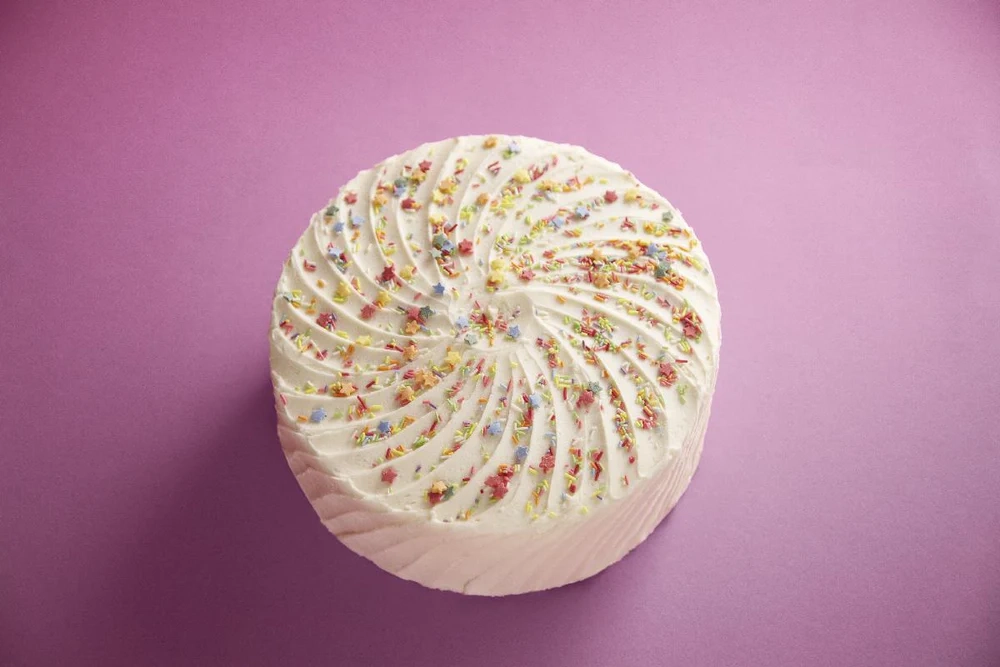
STOP STUBBORN CAKES FROM STICKING WITH OUR SIMPLE GUIDE TO CAKE TIN PREPARATION.
Preparing your tin properly takes a matter of moments and is one little job that’s worth the effort.
Sticking sponges can make it harder to prise your cake from the tin without it breaking into pieces but thankfully there are a few things you can do in advance to smooth the way for easy removal.
Greasing and dusting your tin with flour is essential if you’re baking something with a large surface area that's liable to stick.
Use a clean piece of kitchen towel with a little butter on it to lightly grease around the inside of the tin. This will create an extra layer of oil which when heated by the oven will prevent the cake mixture from sticking to the surface of the tin.
Lining the base of your tin with baking paper is particularly helpful if the cake has a wide base and shallow sides, such as a layer cake.
Applying a thin layer of grease to the tin before fitting the paper will help it to adhere to the sides so your mixture can be added without disturbing the paper.
Loose-bottomed or spring-form tins do make it easier to lever your cake from the tin, but it is still worth preparing them with grease, flour and greaseproof paper as instructed by the recipe.
Lining a round tin:
To line a round tin, place the base of your tin on a sheet of greaseproof paper. Use a sharp pencil to outline the circumference of the tin.
Using a pair of scissors, cut around this line leaving a two-inch border which can be folded over.
Snip along this additional margin so that this border can be folded up the sides of the tin. This should now fit snugly into the base of your tin.
Now for the sides - take a strip of paper around one inch taller than the height of the tin and slightly longer than the circumference.
Place this around the sides of the tin, fitting it inside the folded margin of the base.
Lining a cheesecake tin:
Draw around the base of the tin with a pencil on a sheet of greaseproof paper.
Cut inside this line slightly so that it fits neatly into the base of the tin. Grease the empty tin with a little butter on a piece of clean kitchen towel.
Fit the circle of paper into the greased tin. The butter will help to stick it in place so that the cheesecake base mixture can be added.
Greasing a cake ring or loaf tin:
Using clean kitchen towel, rub a little butter around the inside of the tin to grease it.
Take a small handful or spoonful of flour and dust lightly around the inside of the greased tin. Turn upside down over your kitchen work surface and knock gently to remove any excess flour.
Frequently asked questions:
My tin is non-stick, do I still need to grease it?
Our recommendation is yes. It’s always worth greasing your tin even if it is non-stick. No harm will come to your sponge if you prepare the tin well and quite often non-stick can stick nonetheless!
What can I use to ease my cake from the tin?
Once the cake has been given some time to cool and rest in the tin, use a palette knife or similar rounded knife to run around the edge of the cake. Using a sharp knife could leave scratches on your tin.
Can I use other fats to grease the tin?
While it’s easier to use the same fat that’s in the recipe (often this is butter), there are other greasing options available and this is a matter of preference.
Special pan sprays designed for cake baking are available, but using butter or vegetable shortening is easy and just as effective.
Follow us on
 hummingbbakery
hummingbbakery





